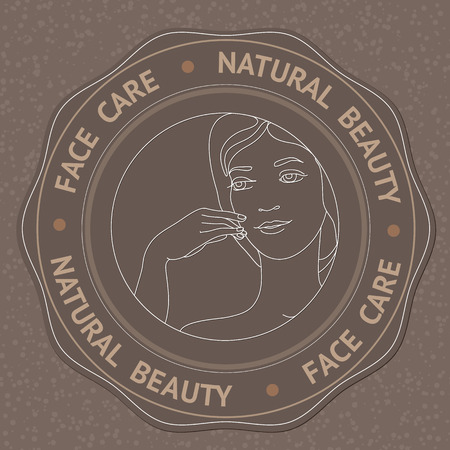1. Introduction: The British Take on Skincare Fads
In recent years, facial cleansing brushes have swept across the beauty aisles, promising a deeper clean and that elusive glow we’re all after. But here in the UK, where traditions run deep and scepticism towards fleeting trends is almost second nature, these high-tech skincare gadgets are met with a healthy dose of curiosity and caution. While influencers and celebrities abroad might rave about their latest skincare device, many Brits still favour a simple flannel and a gentle cleanser over complicated routines. This distinctly British approach—balancing an openness to innovation with a steadfast loyalty to what works—shapes how we view new skincare fads, especially when it comes to sensitive skin. Are facial cleansing brushes truly worth it, or are they just another passing craze best left on the shelf? Let’s dive into how British attitudes influence our adoption of these popular tools and set the stage for exploring their real value.
Understanding Sensitive Skin in the UK Climate
Living in the UK, we’re no strangers to weather that changes its mind by the hour. For those of us with sensitive skin, this means more than just swapping out raincoats for umbrellas—it’s a daily balancing act to keep our complexions calm and comfortable. Sensitive skin isn’t simply about redness or irritation; it’s a heightened reactivity to environmental triggers, which are especially prominent in Britain’s famously unpredictable climate. Here’s how British weather can impact delicate skin:
| Weather Condition | Common Effects on Sensitive Skin |
|---|---|
| Damp & Humid | Clogged pores, increased oiliness, and higher risk of breakouts. |
| Cold & Windy | Dryness, flakiness, and heightened sensitivity due to moisture loss. |
| Sudden Weather Shifts | Redness, irritation, and difficulty maintaining skin balance. |
The constant shift between central heating indoors and chilly winds outdoors puts our skin under stress. As a result, British sensitive skin is often prone to dehydration in winter and congestion in summer. Not only do we have to be mindful of skincare ingredients, but also how our routines adapt throughout the year.

3. Facial Cleansing Brushes: The Science and Hype
When it comes to cleansing brushes, there’s a fair bit of buzz on the British high street—think Boots, Superdrug, and department store beauty halls. But what exactly do these gadgets promise, and how do they truly work for our delicate complexions?
How Cleansing Brushes Work
At their core, facial cleansing brushes are designed to provide a deeper clean than hands alone. They use soft bristles or silicone tips, combined with sonic vibrations or manual rotation, to gently dislodge dirt, oil, and makeup from pores. The science is simple: mechanical action helps exfoliate dead skin cells, aiming for smoother skin texture without harsh scrubbing.
Common Features Found in the UK
| Feature | Description | Popular On High Street Brands |
|---|---|---|
| Sonic Technology | Delivers thousands of gentle vibrations per minute for thorough cleansing. | FOREO, Magnitone London |
| Soft Silicone Bristles | Non-porous material that resists bacteria and is gentle on sensitive skin. | LUNA by FOREO |
| Multiple Speed Settings | Allows customisation depending on skin sensitivity or area treated. | No7, Clinique Sonic System |
| Waterproof Design | Safe for use in the shower or bath—very handy for busy mornings! | Magnitone BareFaced!, Philips VisaPure |
| Timer Functionality | Pulses or beeps to guide optimal cleansing time per area. | No7 Radiant Results, Clarisonic (now discontinued) |
The Science vs. the Hype
Cleansing brushes can enhance your skincare routine if used correctly, but more isn’t always better—especially for sensitive skin. Overuse or using rough bristles can compromise your skin’s barrier. Many British dermatologists recommend sticking to soft-bristled or silicone devices and limiting use to a few times a week. Ultimately, while the allure of perfectly polished skin is tempting, it’s all about balance and listening to your own complexion’s needs. That way, you can enjoy a natural glow—no harshness required.
4. Sensitive Skin Meets Technology: Are Brushes Gentle Enough?
For those of us living in the UK, with its famously unpredictable weather and hard water, sensitive skin is more common than you might think. As facial cleansing brushes become increasingly popular on the high street, it’s only natural to wonder: are these techy tools actually suitable for delicate British complexions? Let’s take a closer look at what local dermatologists have to say.
British Dermatological Insights
According to the British Association of Dermatologists (BAD), sensitive skin can react unpredictably to new products and gadgets. Facial cleansing brushes—whether manual or electric—promise a deeper cleanse, but can sometimes lead to irritation if not chosen wisely. Here’s a quick overview of their recommendations:
| Brush Type | Suitability for Sensitive Skin | Dermatologist Recommendation |
|---|---|---|
| Manual Brush | Varies (depends on bristle softness) | Choose ultra-soft bristles; use gently |
| Sonic/Electric Brush | Cautiously recommended | Opt for lowest speed settings and sensitive-skin heads |
| Silicone Brush | Generally well-tolerated | Look for medical-grade silicone, avoid harsh scrubbing |
The Local Verdict: Proceed with Care
Many UK dermatologists suggest that while facial cleansing brushes can be used by those with sensitive skin, careful selection and gentle usage are key. Overuse or using rough bristles may compromise your skin barrier, especially during chilly British winters. The consensus? Start slowly—perhaps once or twice a week—and always patch test before introducing any new gadget into your routine.
A Fresh Take on Cleansing Routines
If you decide to try a brush, combine it with fragrance-free cleansers approved by British skin experts. And don’t forget: less is often more when it comes to looking after sensitive skin in our unique UK climate.
5. Alternatives to Consider: Keeping it Simple the British Way
For those of us with sensitive skin, sometimes less truly is more—a sentiment cherished in many British homes. While facial cleansing brushes might promise a deep clean, plenty of Brits prefer gentle, natural alternatives that have stood the test of time. Instead of splurging on gadgets, why not turn to these understated classics?
The Gentle Approach: Tried-and-True Favourites
Across the UK, simple routines reign supreme, especially when sensitivity is a concern. Here’s how many Brits keep things clean and calm without fancy tools:
| Alternative | How It Works | Why Brits Love It |
|---|---|---|
| Muslin Cloths | Used damp with a mild cleanser to softly wipe away dirt | Naturally exfoliating, eco-friendly, and easy to wash |
| Cream Cleansers | Massaged in and removed with warm water or cloth | Nourishing and gentle for even the most delicate skin types |
| Oatmeal Washes | Colloidal oats mixed with water for a calming cleanse | Soothe irritation and redness—an age-old countryside remedy |
Simplicity Over Gadgets: The British Philosophy
No fuss, no frills—just a splash of cool tap water, a dollop of trusted cleanser, and perhaps a soft muslin cloth. Many find this back-to-basics approach kinder to their complexion (and their wallet). Rather than chasing trends, sticking to what’s gentle and familiar can make all the difference for sensitive skin.
6. Conclusion: To Brush or Not to Brush?
In true British fashion, let’s have a sensible cuppa and weigh up the pros and cons of facial cleansing brushes for sensitive skin. On one hand, these gadgets promise a deeper cleanse and a touch of luxury in your daily routine; on the other, they can be as unpredictable as the British weather—gentle on some, irritating for others. The science shows that while some people with sensitive skin may benefit from very soft-bristled or silicone brushes used sparingly, others might find their skin barrier compromised. Ultimately, it comes down to listening to your own skin and choosing products that match your personal needs and lifestyle.
| Pros | Cons |
|---|---|
| Effective at removing impurities and makeup | Potential for irritation or redness |
| Can enhance exfoliation gently when used correctly | May disrupt delicate skin barriers if overused |
| Adds a spa-like ritual to skincare routine | Requires careful cleaning to avoid bacteria build-up |
If you’re tempted to try a cleansing brush, opt for a model designed specifically for sensitive skin—think ultra-soft bristles or medical-grade silicone. Introduce it slowly into your routine, perhaps using it once or twice a week at first, and monitor how your skin reacts. And remember, in classic British style: there’s no shame in keeping things simple if that’s what suits your complexion best. At the end of the day, whether you brush or not is entirely up to you—but armed with knowledge and a dash of British practicality, you’ll make the right choice for your sensitive skin.


